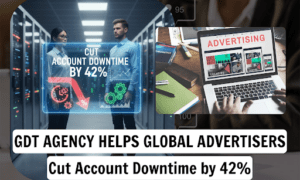For years, I blamed my chronic project delays on everything but the real issue. I’d tell myself the deadlines were unrealistic or that I just needed one more coffee-fueled sprint to catch up. But the truth was messier—and simpler. My work wasn’t late because I lacked discipline. It was late because my creative process was fragmented. Drafts lived in one folder, client feedback in another, and research was spread out like confetti across dozens of open browser tabs.
It wasn’t until I paused and examined the architecture of my workflow that I realized how chaotic it had become. The irony? I was drowning in my own attempts to stay organized. Something had to give. That something turned out to be my relationship with clutter—and once I streamlined my process, everything changed.
The Myth of Organized Chaos
There’s a seductive myth in the creative world: that chaos fuels brilliance. I used to believe it. I thought bouncing between platforms and toggling through scattered tabs was just part of how my brain worked. But over time, what seemed like energetic momentum became mental fog. I wasn’t multitasking—I was stalling.
One day, I opened a tab to find a reference image I swore I’d saved. I ended up stumbling down a 45-minute rabbit hole that had nothing to do with the project. That’s when it clicked. Organized chaos wasn’t clever; it was costly. I needed a system that reduced friction and gave me back my focus. Just as cleaning your desk can boost mental clarity, organizing digital spaces yields similar benefits.
Shifting from Scramble to Structure
My first step was consolidating. I created a project hub: one folder per client, containing everything—drafts, references, feedback, even voice memos. No more scavenger hunts. Following these steps to declutter your digital workspace can streamline your workflow and reduce stress. If I had to think about where something lived, it lived in the wrong place.
When clutter builds up, it quietly chips away at your confidence. Misplaced files and forgotten notes become more than nuisances—they become stress triggers that accumulate over time. Each time I forgot where I placed a note or missed a revision comment, I felt a spike of stress that added up over weeks. It’s hard to feel like a competent creator when you’re constantly retracing your steps.
Why Streamlining Frees Up Creative Energy
When you declutter your digital workspace, you’re not just cleaning up files—you’re clearing out the mental noise that comes with them. For me, every decision about where to find something was a tiny tax on my attention. Multiply that across a dozen assets per project, and I was bleeding bandwidth. I found that even small changes to my file structure and routines could pay off big. One example? Strategies that help reduce organizational digital clutter ended up improving my concentration and output without overhauling everything.forbes.com/councils/forbestechcouncil/2023/12/13/a-new-years-resolution-five-steps-to-reduce-organizational-digital-clutter/) can significantly enhance focus and productivity.. By streamlining your digital workflow with integrated software solutions, I eliminated unnecessary steps and focused more on creative tasks.
The shift to streamlined systems wasn’t about discipline. It was about design. I stopped asking myself to remember things and started designing workflows that remembered for me. That’s when the real creative energy started coming back.
Systems Beat Sprints
I used to rely on adrenaline to hit deadlines. Now I rely on systems. It’s a different kind of power—one that builds rather than burns. When you know where everything is and how to access it instantly, your brain stops wasting energy on logistics and starts doing what it was built to do: create.
Once I had fewer browser tabs and open windows demanding my attention, I noticed something remarkable: I could sit in deep work for longer. Focus, once elusive, became something I could cultivate. And the better my systems got, the more consistently that focus showed up. Amidst current challenges, many find it hard to focus on work, highlighting the need for streamlined processes. Exploring the top digital tools for streamlining business operations across industries provided insights into optimizing my workflows.
Merging Resources Means Merging Momentum
One of the best changes I made was bundling related materials into single, accessible packages. Whether it was a project outline with its draft and reference links or client notes stitched directly into a working doc, I started thinking in terms of “kits” instead of scattered parts.
The tool that surprised me most in this process? PDF merging. I used to download articles, highlight reference excerpts, or get annotated contracts—and they’d each live in their own silo. But once I started to merge different PDF files into consolidated packages, review sessions and brainstorming sprints became dramatically smoother. Utilizing tools like WPS Office can enable seamless merging of PDFs online, simplifying document management.
Less Tabs, More Flow
Instead of jumping between five PDFs and a folder of notes, I could just open one file. Everything I needed was right there. Merging documents into one well-organized file gave me more than efficiency—it gave me mental clarity, helping me stay immersed in the task without constant tab toggling. That one-click unification meant fewer breaks in thought, less context-switching, and more consistent creative flow.
Creating with the End in Mind
Having consolidated reference kits helped me storyboard more intuitively. It’s like working with a mood board rather than a loose stack of puzzle pieces. I could now see the shape of a project before I wrote a single word.
Automating the Redundant
There’s a false badge of honor we give to repetitive work—as if doing it manually proves we’re grinding hard enough. I used to feel guilty setting up automations. But I eventually realized: if it’s something I do more than twice, I should never have to do it manually again.
So I started automating file naming, folder templates, even how I pre-populate task lists for new projects. I also explored options for automating business processes with Salesforce, which freed up time for strategic work. The time savings added up fast, but more importantly, it kept me in flow. I no longer had to pause for setup. I just created. Embracing automating repetitive tasks meant fewer hours spent on the tedious parts of my routine—freeing up more bandwidth for strategic, high-value work. For those new to automation, getting started with AI in business automation offers a comprehensive guide.
The Clutter of Repetition
Repetition wears down your focus. Each time I recreated the same folder or renamed yet another file manually, it pulled me out of my creative rhythm. Every time I had to re-do something I’d done a hundred times before, it chipped away at my engagement. Automation cut that noise. At the macro level, even initiatives like the massive IRS data project illustrate how automation can wrangle complexity and make sense of sprawling, multi-layered data ecosystems—something I was trying to do on a smaller scale every day. Many companies are leveraging AI and automation to streamline financial operations, enhancing accuracy and efficiency. It made room for ideas I didn’t even know I had, because I was too busy clicking through old checklists to notice.
Investing Once, Gaining Daily
Automations require setup, yes—but that effort pays daily dividends. Every time a new project spun up with pre-filled folders and naming conventions, I gained ten minutes of flow. Over months, that became whole days of uninterrupted creative time. Even saving seconds in daily tasks can lead to significant productivity gains over time.
Tools Are Only as Good as Your Use of Them
I used to think more tools meant more productivity. But over time, I realized that a surplus of apps often created more decisions and more places to misplace things. Instead, I started asking: what’s the fewest number of tools I need to do this well? Choosing from the must-have tools for business success and scalability in 2025 significantly enhanced my workflow efficiency.
Once I narrowed down my toolkit, everything became lighter. I no longer needed five apps to track tasks, just one that worked across devices. I didn’t need three annotation platforms—just one PDF editor that did it all. Simplicity won. The connection between tool simplicity and output became even clearer when I saw how much more consistent my results were. It reminded me that worker productivity isn’t just about effort—it’s about alignment with tools that actually support the work. Identifying the growth and efficiency essentials streamlined my operations effectively.
Every new tool is a new layer of complexity. The trick is not adding more but choosing tools that integrate into your existing ecosystem. Xodo, for instance, worked well not because it had every feature, but because the ones it had played nicely with my workflow. The tools that stay are the ones that disappear into the background.
The False Comfort of App Switching
Switching tools feels productive—it’s a dopamine rush. But that constant change masks deeper inefficiencies. Once I committed to fewer tools and trained myself to master them, my execution speed doubled.
That shift didn’t just affect my pace—it reshaped how I approached learning. Instead of jumping ship when a tool felt unfamiliar or clunky, I leaned in and learned its logic. I dug through settings, figured out shortcuts, and customized it to my workflow. What began as a constraint turned into empowerment. Mastery, I realized, didn’t come from piling on tools. It came from knowing how to use fewer tools with greater intention and depth. I leaned on the top tools driving success in 2025 as foundational pieces of my systemized approach.
Building a Culture of Clarity
As I reworked my systems, I also had to rethink how I collaborated. The mess wasn’t just mine—it was communal. So I began sharing templates with clients, documenting version histories, and establishing feedback loops that were structured, not chaotic.
What I learned? People welcome structure when it respects their time. Clients responded well to labeled file versions and centralized dashboards. It turned collaboration from a game of email ping-pong into a clear, trackable process. Effective communication is key to mastering remote leadership, ensuring clarity across distributed teams.
When clarity becomes cultural, creative output scales. Everyone knows where to look, how to give feedback, and what version they’re commenting on. That kind of shared rhythm is a creative multiplier.
Conclusion
Cleaning up my creative process wasn’t a matter of working harder. It was a matter of working clearer. Once I stopped treating clutter as a badge of busyness and started treating clarity as a creative asset, everything changed. Projects moved faster, and the time between feedback and delivery compressed. Instead of drowning in logistics, I found myself steering the creative ship with clarity.
In the end, simplicity isn’t the enemy of creativity. It’s the launchpad. By trimming the digital fat, bundling my assets, and turning scattered fragments into coherent kits, I didn’t just organize my work—I unlocked it.





























